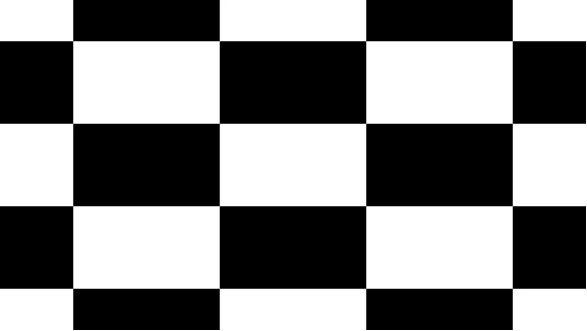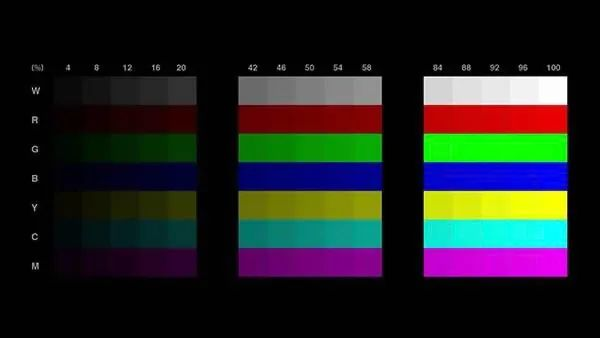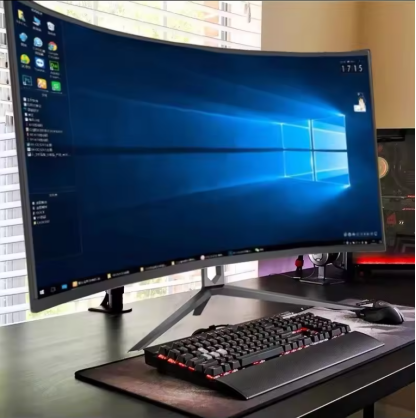In today's technological age, display screens are an indispensable part of our daily lives.
When customizing display screens, we often see an important parameter-contrast. So, is the higher the contrast of the display screen, the better? This article will explore this issue in depth.

First, we need to understand the concept of contrast.
1. What is contrast
Contrast refers to the degree of difference in brightness when the display displays black and white. Specifically, it refers to the brightness ratio of the same point on the screen when it is brightest (displaying white) and darkest (displaying black), which is a ratio of large in front and small in the back.
The higher the contrast, the more layers there are between light and dark, the display can achieve a smoother transition, and the more expressive the picture is. High-contrast displays can present richer colors and clearer pictures.
To a certain extent, the higher the contrast, the better the display effect.
High-contrast displays can show more delicate color changes and more vivid black and white contrast, giving the audience a stronger visual impact.
For professional fields, such as photography, design, video production, etc., high-contrast displays can better present works and improve work efficiency.
2. What are the types of contrast
The contrast we are familiar with is divided into two types, one is static contrast and the other is dynamic contrast.
Static contrast = white screen brightness / black screen brightness, basically in the thousands (1000:1). Generally, the contrast of IPS screens is around 800~1500:1, the contrast of VA screens is 3000~4000:1, and the contrast of TN screens is generally only 600~800:1. The larger the number in front, it is usually called "higher contrast".

Dynamic contrast refers to the contrast value measured under certain specific conditions, that is, the brightness ratio of the brightest and darkest parts of the screen at a certain moment. Its main function is to ensure that the brightness of bright scenes and dim scenes are dark enough.
Therefore, dynamic contrast has a more obvious practical significance for applications that need to switch between bright and dim scenes frequently.
It should be noted that the contrast of the display generally refers to static contrast, and dynamic contrast does not have much reference value for comparison.
3. Is the higher the contrast, the better?
It should be noted that the higher the contrast, the better. This rule only applies within a certain range. If it exceeds the reasonable brightness of the display, the higher the contrast will have the opposite effect, resulting in reduced screen clarity and affecting the visual experience. So, what kind of contrast is suitable?
Generally speaking, a contrast ratio between 1000:1 and 3000:1 is considered to be a good display.
For ordinary users, the contrast ratio within this range is sufficient to meet daily needs.
For professional users, a higher contrast display can be selected according to work needs.
For example, for gamers, when choosing a gaming monitor, you can refer to the screen material, brightness, contrast, etc.

In fact, the optimal value of contrast varies depending on the display and the objective external conditions.
When customizing an LCD Monitor, it should be determined based on your user needs and viewing comfort. Too high or too low a contrast ratio may have a negative impact on the visual experience.
4. The impact of the contrast ratio of the LCD screen on the display effect
In an LCD screen, contrast is achieved by adjusting the backlight brightness.
High-contrast LCD screens can still maintain high brightness under darker backlights.
Low-contrast LCD screens need brighter backlights to maintain high brightness.
Therefore, high-contrast LCD monitors can better restore the details and colors of images, while also reducing eye fatigue and discomfort.
In addition to the impact on the display effect, contrast also has an important impact on the power consumption and life of the LCD screen.
High-contrast LCD screens usually require higher backlight brightness, so they consume more electricity. In addition, the backlight life of high-contrast LCD screens will also be shorter than that of low-contrast LCD screens.
Therefore, when selecting an LCD screen, you must look at the contrast parameter rationally and choose it based on actual needs to customize the LCD display screen that best suits your user.
In summary, LED monitor contrast is one of the important factors affecting the display effect. High contrast can bring clearer and more realistic picture effects; but it also requires more electricity and a shorter backlight life. Therefore, when choosing an LCD screen monitor, you need to choose a suitable contrast according to your actual situation.